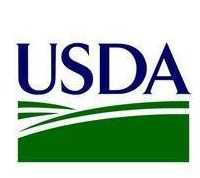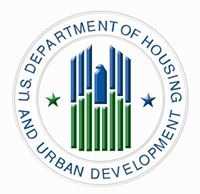The Top Tips to Prevent Water Damage in Your Home
Did you know that billions of dollars are spent on repairing water damage to homes across the United States every year? While some instances of water damage are out of our control, most can be easily avoided.
With a little bit of foresight, regular maintenance, and preparation, you can keep water damage at bay and the unnecessary costs that come with it.
Here are a few tips and tricks to help you keep tabs on how water is moving around your property.
8 Water Damage Prevention Tips
As a homeowner, you’re probably covered by a standard form of insurance when it comes to unforeseen circumstances and water damage. This would include flooding, wind-driven rain, and ice dams on your roof.
As a general rule, most standard home insurance policies cover water damage that flows from the top down. But what’s generally not covered is a lack of maintenance and foresight when it comes to water regulation on your property.
Here’s how to keep water damage at bay.
- Maintain Your Water Drainage Systems
Poor water drainage around your property can cause larger problems that surface-level water pooling. Improper drainage can weaken your foundation and cause cracks in your walls, pathways, and flooring.
To ensure your water drainage is in good standing, clear out your gutters and downspouts regularly. Blocked guttering can cause massive water build-up which could overflow down the sides of your house. Ultimately, this could damage your siding and foundation of your home.
Ideally, your downspouts should direct water 5-10 away from your home. To add to this, a good yard slope is also important to run water away from your foundation. If your home has crawl spaces underneath it, direct water away from this area to avoid water pooling and damp build-up.
- Install a Water Alarm
If you’d like a little forewarning when it comes to slow leaks around your home, then a water detector is your answer.
This is a small electronic device that sounds an alarm when it detects water leakage in a specific area of your home. A water alarm is best installed near areas notorious for dampness. This includes sump pumps, heat pumps, washing machines, dishwashers, toilets, and under sinks.
Learn more here about the best water alarms for your home.
- Don’t Neglect Your Sump Pump
If your home features a sump pump, it’s important to test the pump regularly, especially before the rainy season. You don’t want to find out you have a faulty sump pump during a heavy storm.
Make sure to test the function of your sump pump around twice a year, at the change of winter and summer. To test your pump, slowly fill the pump pit with water. Make sure the float rises to turn on the pump. Then, make sure the water level falls appropriately once the pump is activated.
If you have a backup pump, don’t forget to test this, too. Test your backup the same way as above, but make sure to turn off the main sump pump first.
If you fail to test out the function of your sump pump, this could lead to major issues with basement flooding, ruining drywall, carpeting, etc.
- Routinely Check For Water Leaks
If you fail to recognize and fix a water leak in your home, this could lead to mold, wood rot, or even an infestation of termites and carpenter ants.
To check for leaks in and around your home, there are a few key places you need to check regularly. Make sure to inspect cabinets under sinks, areas around exposed piping, your attic, basement, toilets, and outdoor faucets.
Look for dark spots under piping, stains on the ceiling, toilets that are a little wobbly and drips, of course.
Inspecting your roof at least once a year is also important, even if you don’t have an attic. Look for loose shingles or roof tiles, leaks around flashing and siding, and repair caulking where necessary.
- Keep Garden Vegetation in Good Condition
A blooming garden with plenty of beautiful foliage may be a wonderful sight during the spring and summer. But if this vegetation begins to get a bit out-of-hand, this can affect your home’s water systems.
If you have thriving shrubs and trees around your house, make sure to check that there are no roots wrapped around exposed piping or blocking your drains.
As a general rule-of-thumb, try and keep landscaping to a minimum around utility pipes and drains. You may need to remove trees or shrubs if they become too big over time.
- Know Where Your Water Main Is
Heading out-of-town for a little while on a family vacation? Do yourself a favor and shut off the water to your home at the water main. This way, you can avoid water damage by avoiding faucet drips or pipe leaks while you’re away.
The same goes for doing regular water maintenance around the home. Don’t forget to shut off your water mains first before repairing or replacing piping.
- Don’t Neglect Your Water Pressure
Irregular water pressure can be extremely damaging to the pipes and houses around your home. If the water pressure coming onto your property is too high, this could cause your pipes to fail over time, causing major water damage.
You can buy a water pressure gauge, attach to an outdoor faucet and open it at full force. This way you’ll be able to read what your water pressure is on the regular.
The ideal amount of water pressure for a residential property is anywhere between 40-70 psi. If the water pressure reading is above 100 psi, you may need to install a water pressure regulator.
- Keep an Eye on Your Water Bill
Often, the best way to tell if you have an issue with your home’s water systems is via your water bill. If your water usage increases dramatically from one month to the next, this is a clear sign of a water leak(s) somewhere.
This is an obvious sign you should do some major inspection of your property, and pin-down and fix those leaks!
Stay Ahead of the Real Estate Game
If you’re looking at investing in real estate, buy your first home or claim for water damage, our site offers the advice you need!
Be sure to explore for more helpful tips, news, press releases, and more on the United States real estate industry.













